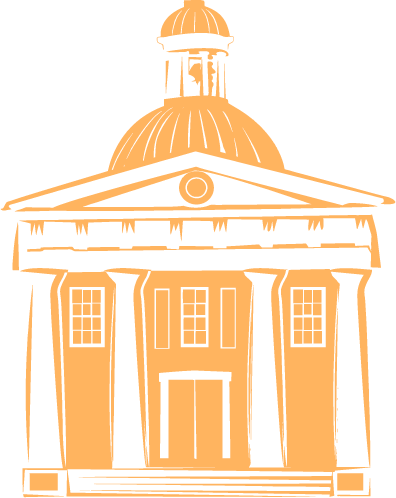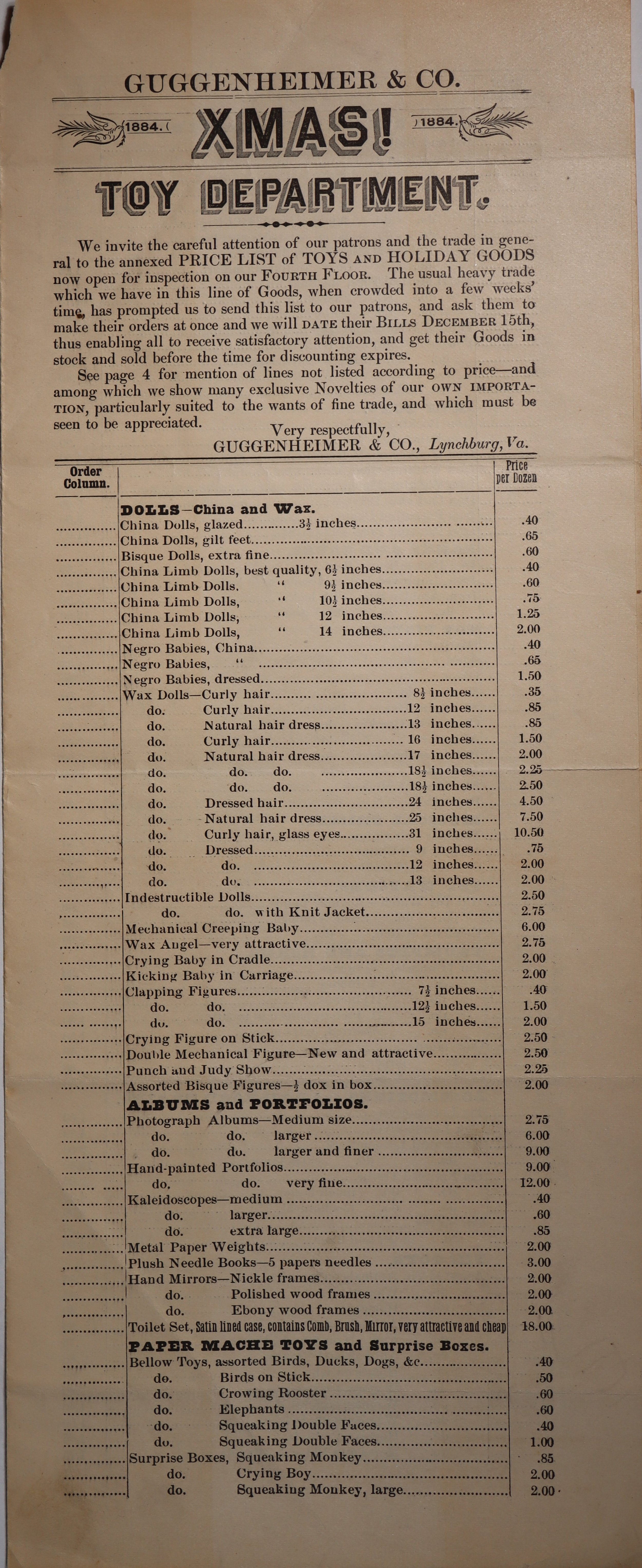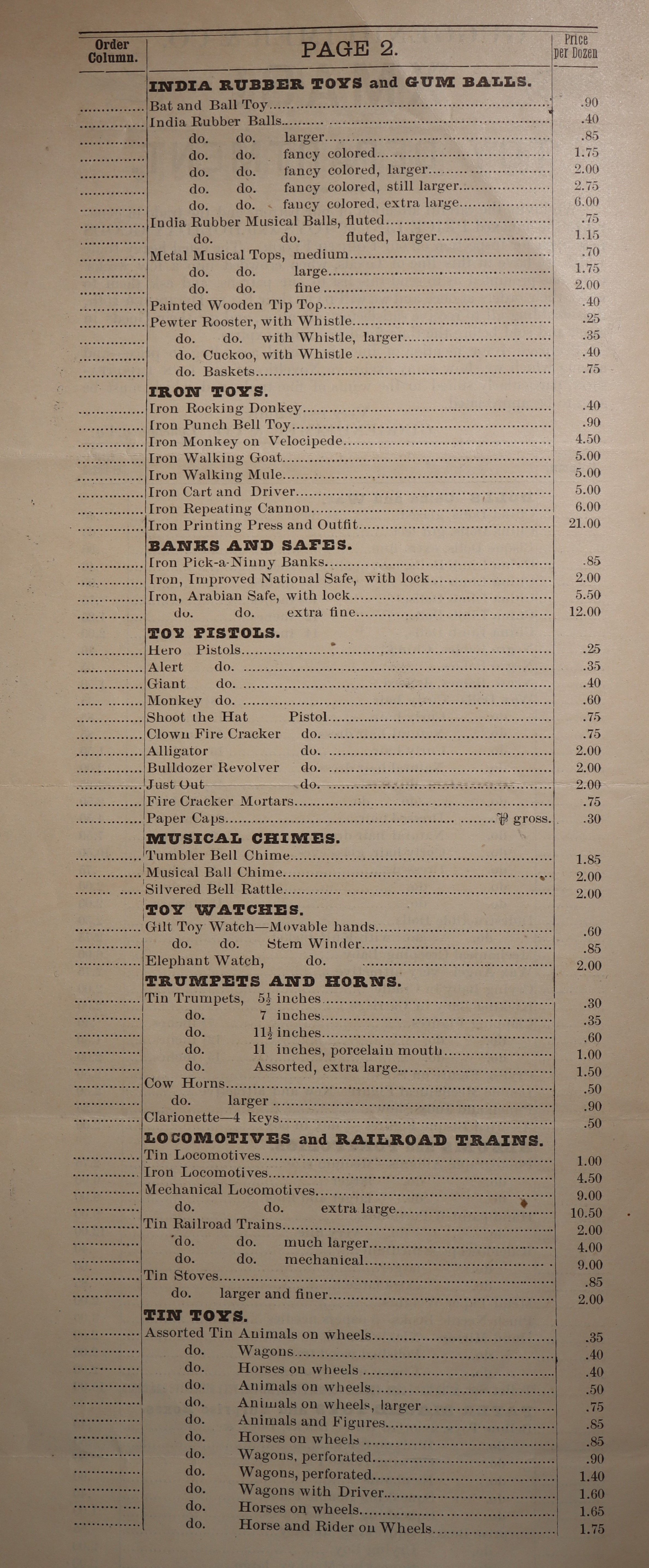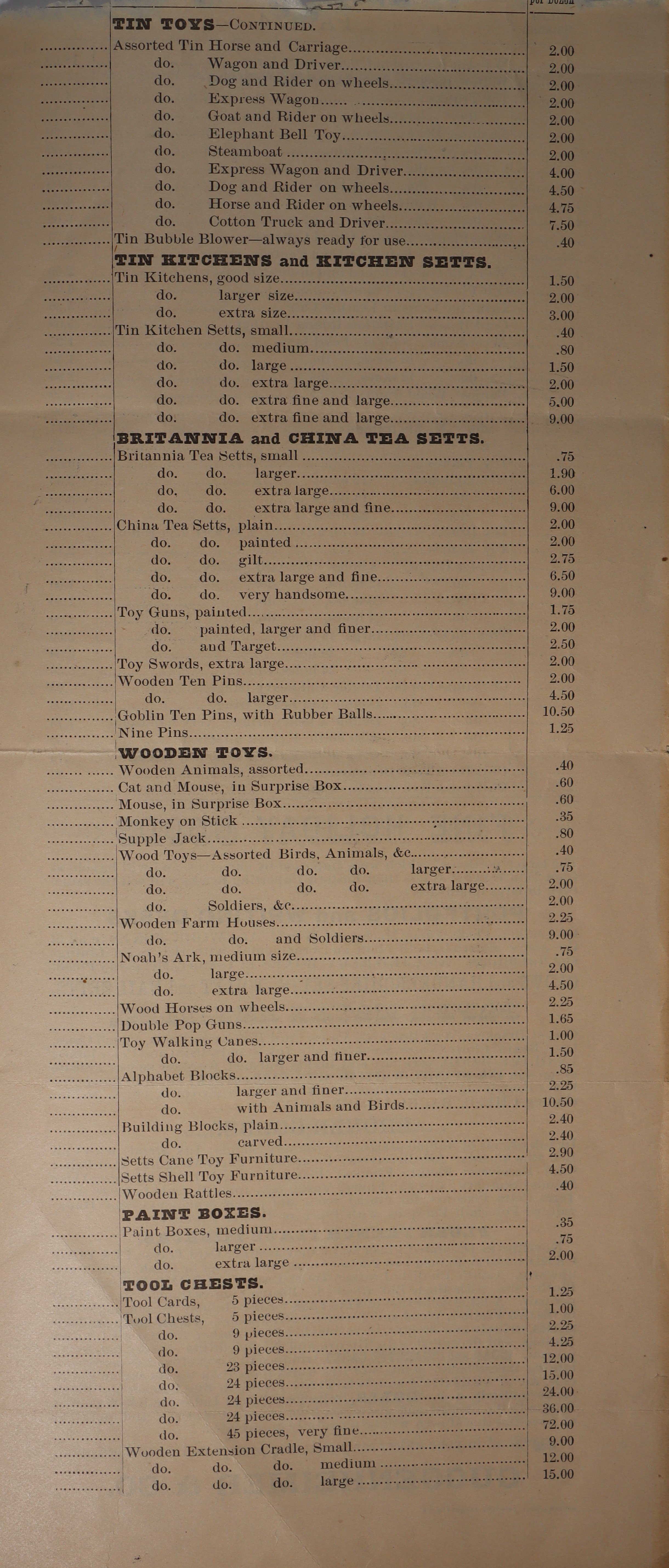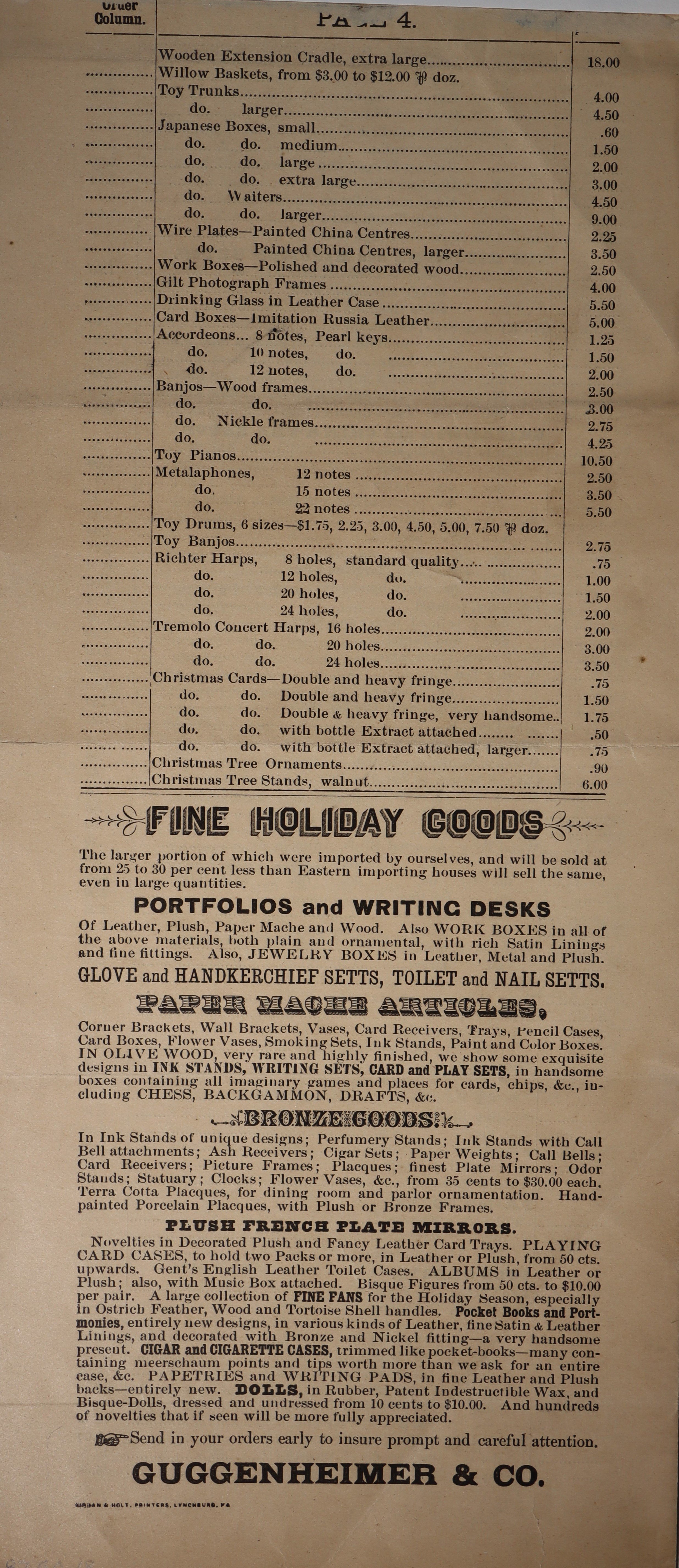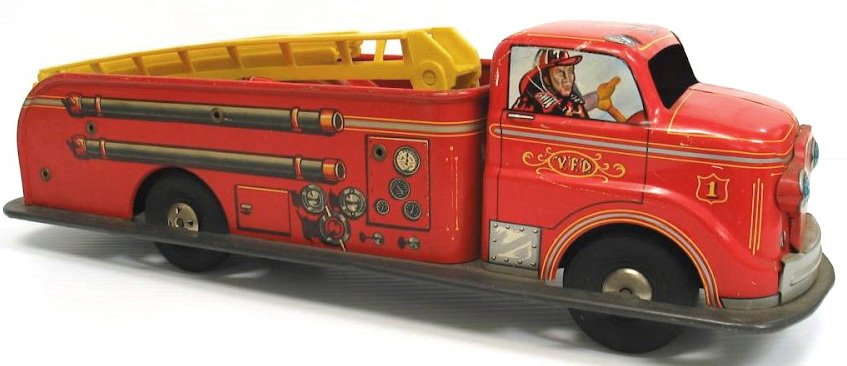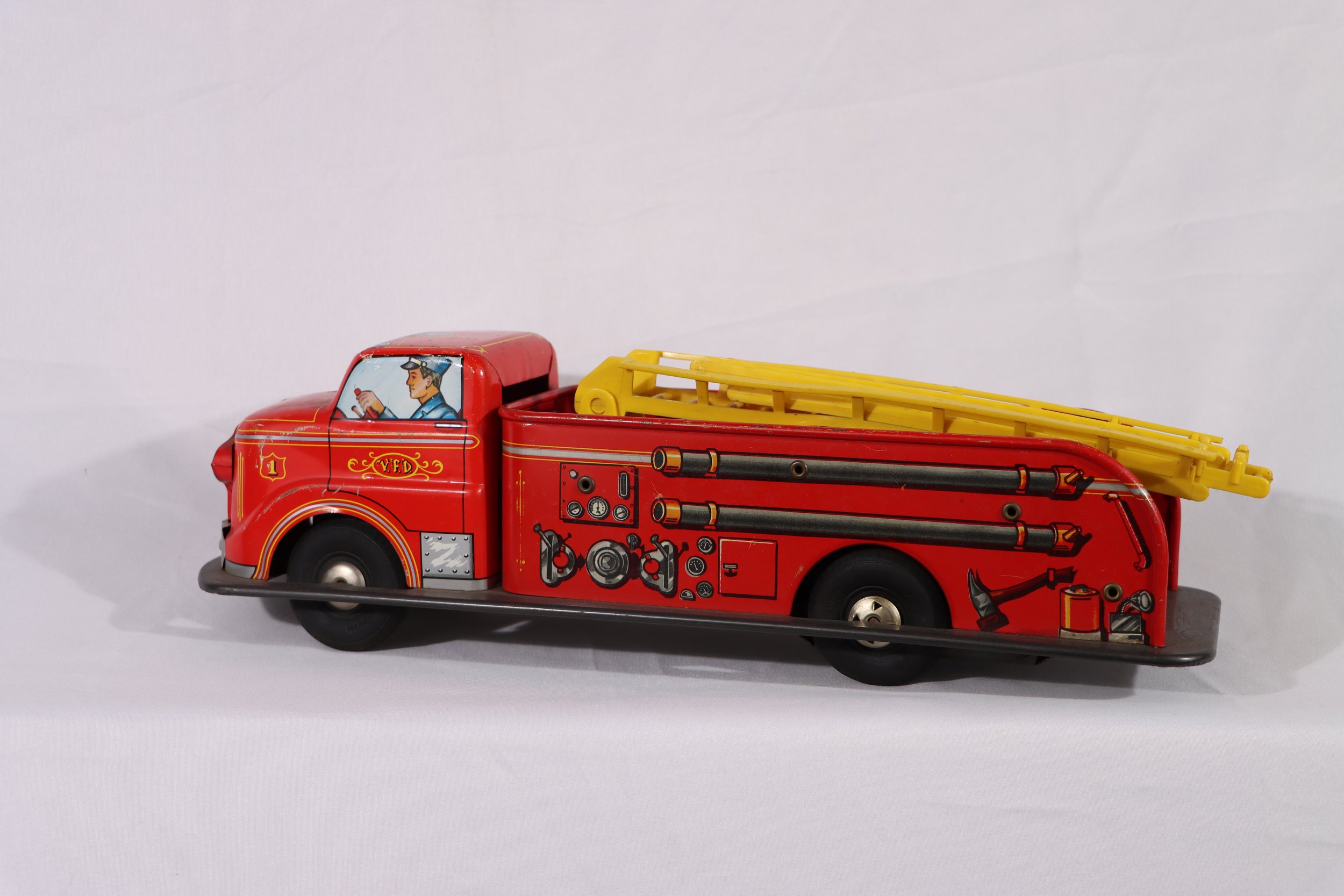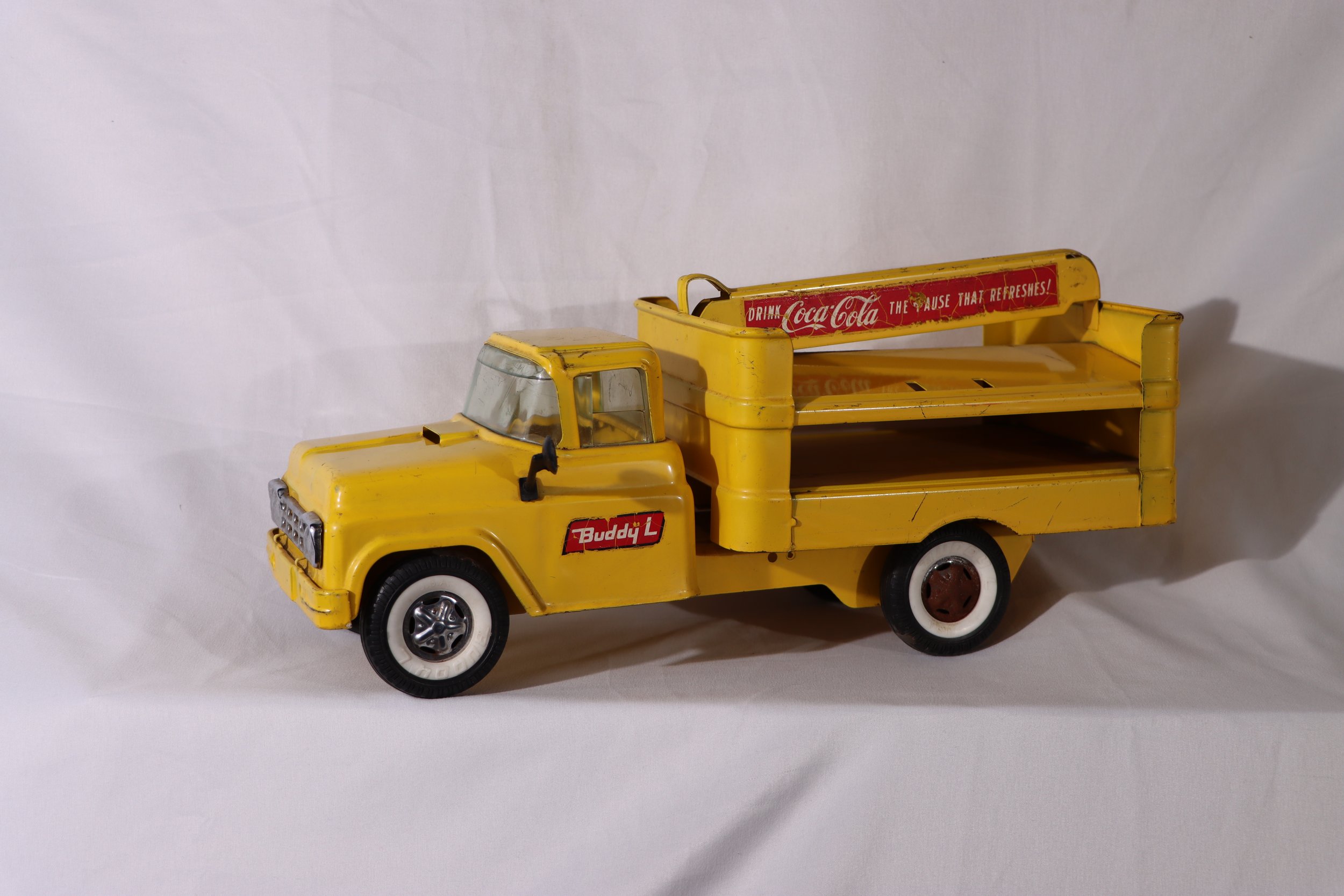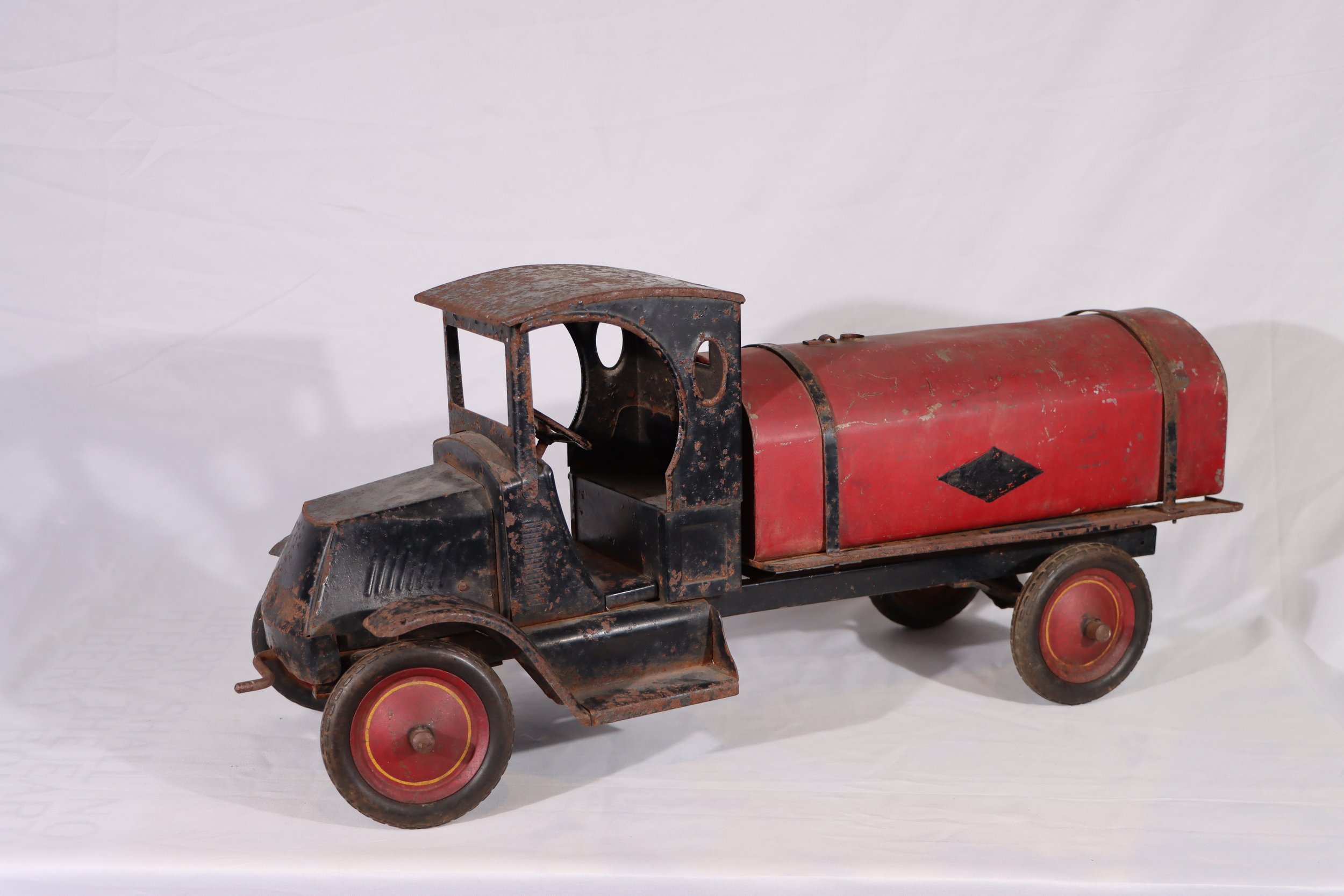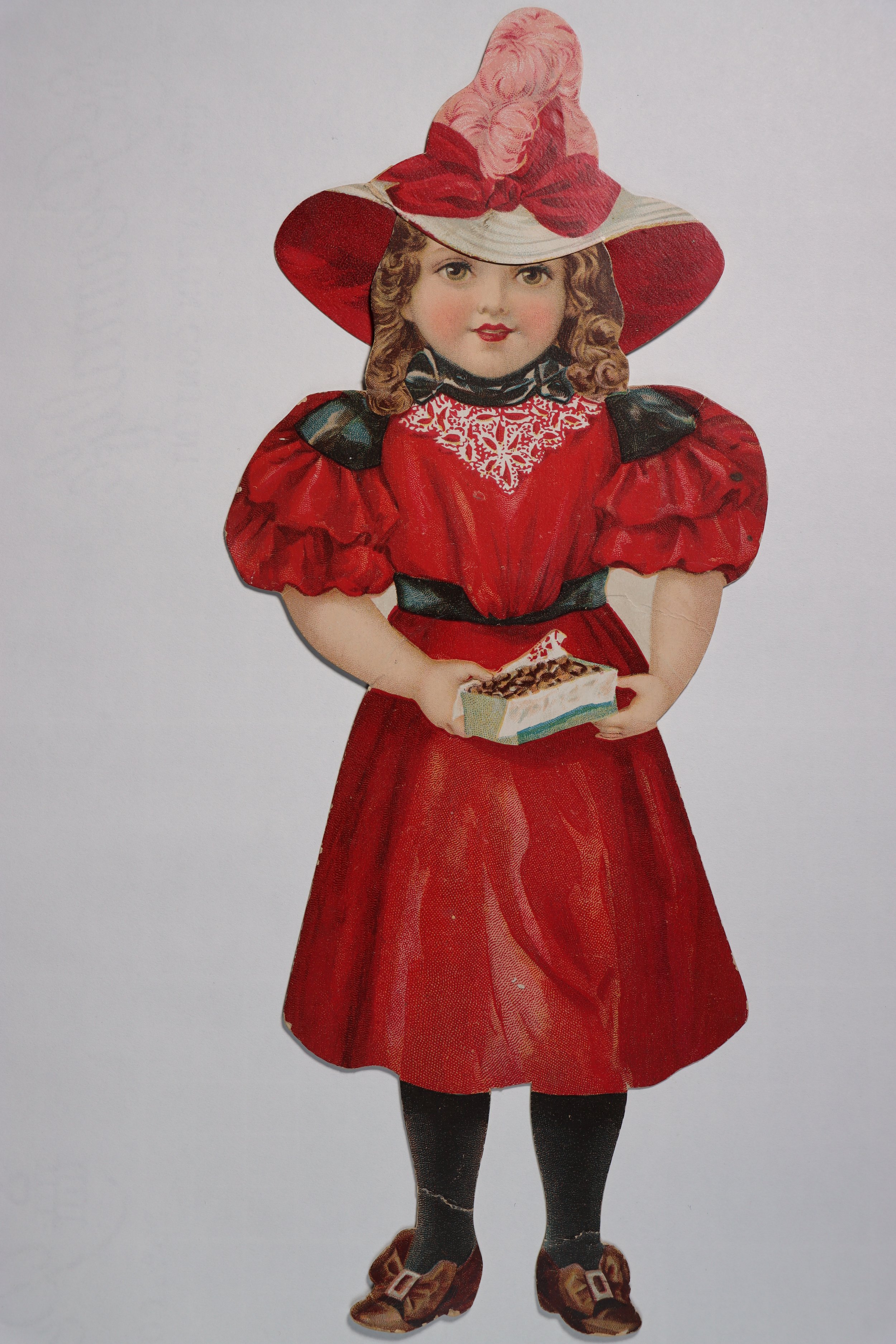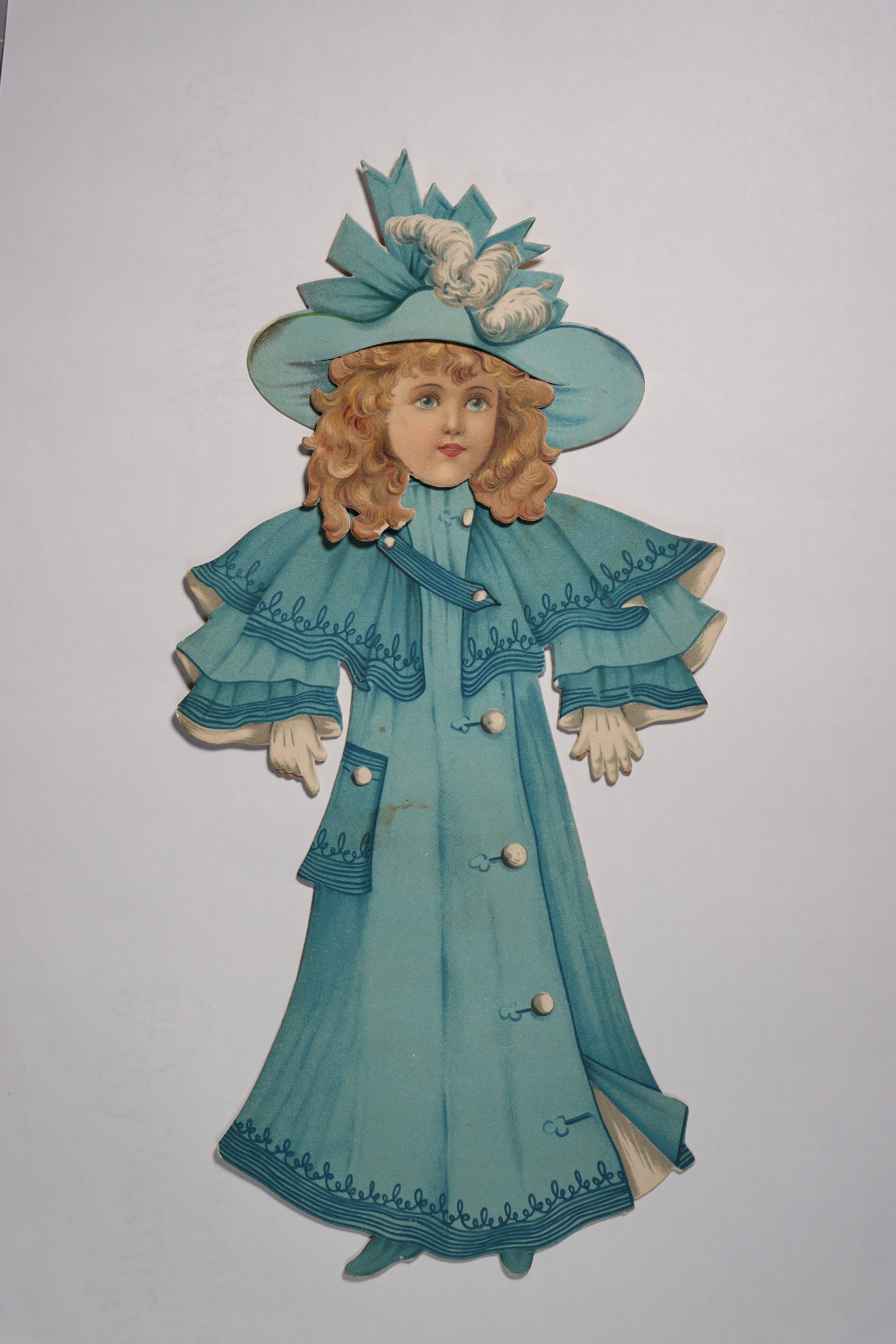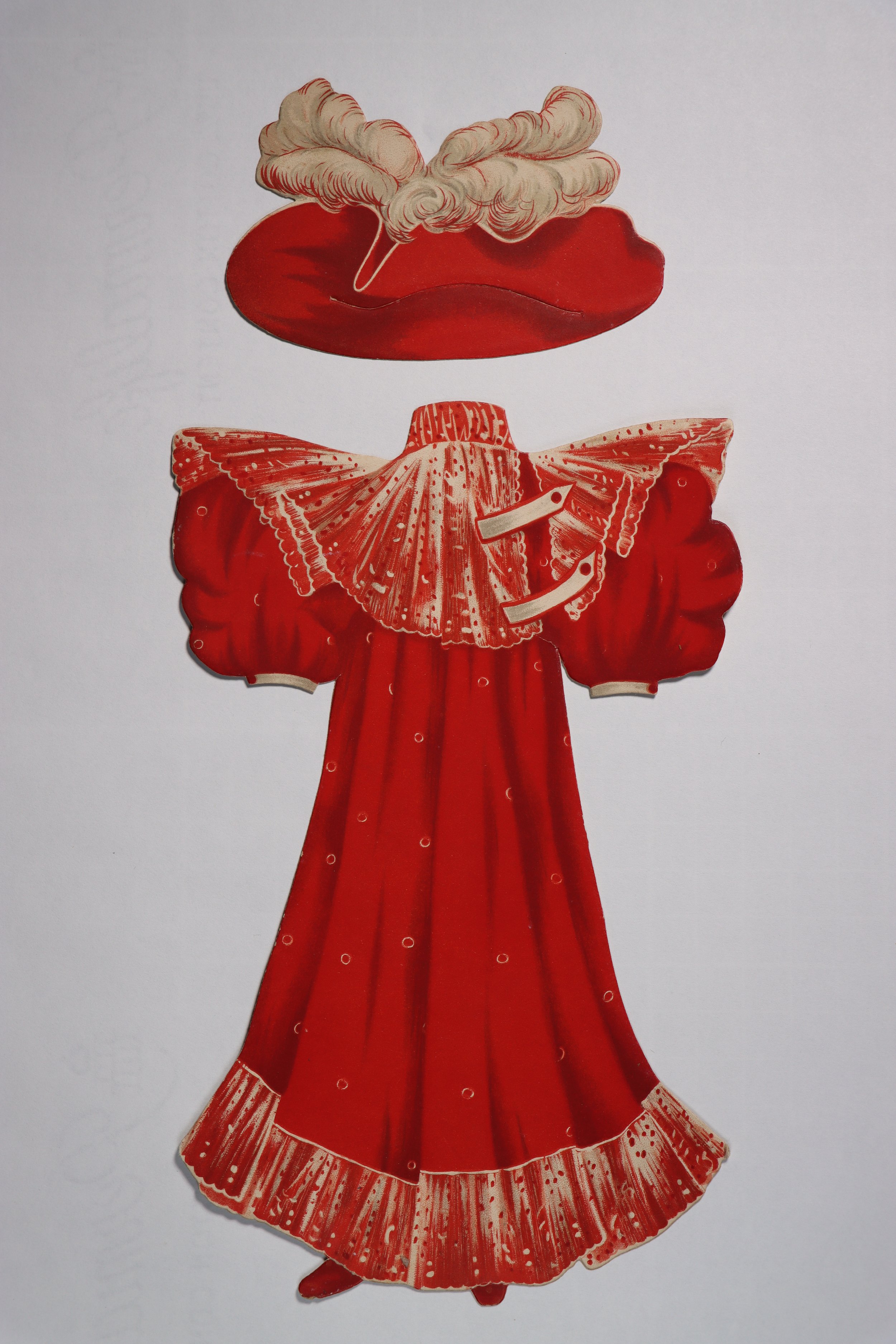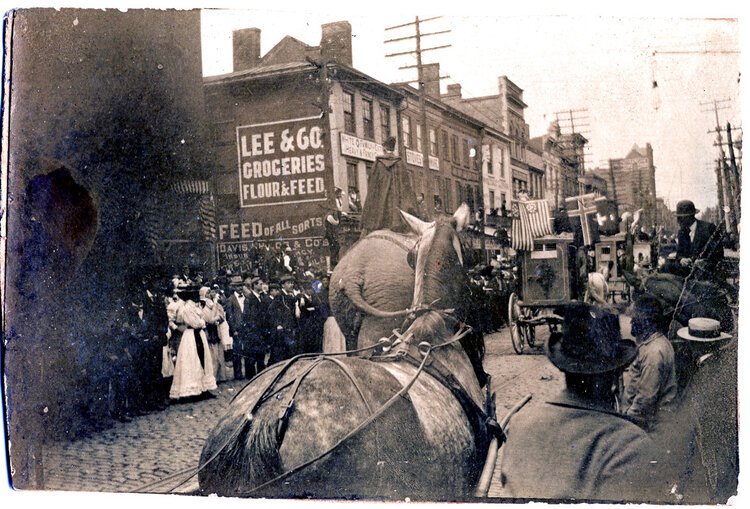Exhibit Curated by Cathy Dalton
Digitized by Cathy Dalton and Laura Crowe
Introduction
For many of us, toys epitomize the magic and delight of the Christmas season, as well as other holidays and events such as baby showers or birthdays. For over two centuries, children in this country have anticipated the joy of unwrapping presents during the holidays, hoping to discover toys–objects of whimsy–to spark their imagination and enhance their play.
Although the practice of holiday gift-giving stretches back even further, the American toy industry emerged in the 1820s. In the years that followed, publishers began producing books and magazines intended for children that advertised these goods. For example, in 1933 Sears produced its very first toy catalog, The Sears Christmas Book, which featured everything from dolls to fruitcakes to live singing canaries. This catalog launched the annual tradition, beloved by children but perhaps viewed askance by parents, of the mesmerizing holiday wish list. For many, this fascination with toys persists into adulthood and most grown-ups can recall favorite toys with a touch of enjoyable nostalgia. Indeed, the Sears Christmas Book was not the first toy catalog to appear in this area. Lynchburg’s own Guggenheimer and Company department store offered its Christmas Toy and Fancy Goods catalog to local patrons beginning in 1884 (pictured below).
Over the years, the Lynchburg Museum has showcased toy banks, dolls, soldiers, trains, etc., from our collection. For this exhibit we’ve gathered a variety of toys from different eras of our city’s history. Many of these items were purchased from Lynchburg’s prominent toy stores.
These toy stores have included:
Bragassa Toy Store
Brown's Toy Center
S. O. Fisher Inc. Store
Givens Books-Little Dickens
Jefferies Toy Store
KB Toys
Toys“R”Us
Village Hobby Shop
In 2023 the only merchant in the city dedicated to children’s toys was Little Dickens, “Lynchburg’s Finest Toy Store.”
View of the S. O. Fisher Store photograph, 1962
This photograph documents the S. O. Fisher store at 1024 Main Street. S. O. Fisher occupied the building at 1024 Main Street, a few years after 1857 when he returned to Lynchburg and bought out the business. The original S. O. Fisher store, owned by his brother and located at 1030 Main Street, was established in 1828.
Transfer from the Lynchburg Historical Society Museum
74.489.24
Guggenheimer & Co. 1884 Christmas Toy Catalog
Donated by Mary S. Guggenheimer
87.50.18
Print, Photographic: young boy at the city Kite Day, site is the old stadium at the bottom of 12th and Court St. the boy holding the plane is Vincent "Squeek" Burnette
Transfer from The City of Lynchburg / Parks & Recreation Dept.
2003.1.49
Toy Wagon: Thornhill Wagon, Jr., 1926. This early 20th century child’s wagon was purchased by the Thornhill Wagon Works as a promotional item. Manufactured by Studebaker.
Donated by Mr. Gordon Watts
84.18.1
Vehicles for All Ages and Sizes
More than trivial playthings, toys also foster imagination in children and can even inspire their future endeavors. Col. Vincent W. “Squeek” Burnette’s (pictured left) early years spent flying a toy plane foreshadowed what would become a life-long passion. Burnett became a pilot, barnstormer, and flight instructor, and during WWII he served as a courier and technical advisor to Brig. Gen. James H. Doolittle. Later, Burnett created a pilot indoctrination program, introduced an innovative a high-altitude target-towing procedure, and served as a clandestine operator within the French Underground.
Toys have changed over the years, from wagons, to motor vehicles to jets powered by the imagination of a child. One constant remains—toys mimic the adult world. Small-scale vehicles, for instance, have been treasured by children for decades.
Joseph Bragassa Enjoying a Child-Sized Model-T (4397) An undated image of Joseph Bragassa operating a toy Model T from the toy store.
Descriptions of objects above:
Toy Fire Truck. Made of stamped metal, with friction motor, and plastic extension ladder. Manufactured by Marx Toys.
Gift of Shirley Lewis
2009.40.1
Toy Model of Early 1960 Chevrolet Corvair. Made of tin with friction motor. Model is designed to replicate a fire department chief's vehicle, with operating windshield wipers and rotating emergency light on the roof. Manufacturer unidentified.
Gift of Shirley Lewis
2009.40.8
Toy Coca-Cola Delivery Truck. Truck is made of stamped metal, minus load of toy crates. Sign over cargo bay reads "Drink Coca-Cola / The Pause That Refreshes!"
Gift of Shirley Lewis
2009.40.3
Toy Tank Truck, c. 1920. Purchased at Bragassa's toy store by Dr. W. W. Dennis DDS. The toy truck is made of metal with rubber tires. There is a metal spout on the back of the tank that used to be operational. The steering wheel turns to activate the front wheels. The truck can be ridden by a small child. There is a hand crank at the front of the truck to feign starting the engine. It was made by the American National Company in Toledo, Ohio, known as a "sidewalk toy."
Donated by Henry H. Dennis
96.43.2
Playing with Dolls
Dolls have long been a favorite toy, appealing to children who wished to copy their parents and the particulars of childrearing. Dolls could also serve a commercial purpose as well and were sometimes used to advertise clothing and other household wares. Fashion dolls, with changeable outfits, enticed parents to purchase new clothes for daughters wishing to keep up with shifting clothing trends.
Two Young Girls Holding Dolls, 1950. One girl holds a certificate/award.
Transfer from The City of Lynchburg / Parks & Recreation Dept.
87.10.101
Mechanical Doll, c. 1911
A. Schoenhut Company, Philadelphia
wood, ceramic, fabric
This doll, costumed as a fortune-teller, holds a sack and bell and stands on a wheeled cart. The mechanical movement on the underside of the cart is designed to move her arm to ring the bell when the cart is pulled along on a string. A hand-written inscription in pencil on the cart’s underside reads “Marie Gordon Macdonald Xmas 1911”.
Gift of Nancy Burch Hunter
2006.3.26
Fashion Doll, 1890-1900
paper, ink
This doll with brunette hair is shown in a red undergarment, black stockings and black shoes. She holds a box of candy and is supplied with three dresses and matching hats, in pink, green and yellow.
Gift of Miss Rose McWane Kizer
89.8.730
Fashion Doll, 1890-1900
paper, ink
This paper doll wears a blue dress with white gloves and matching hat. She was also supplied with pink, red, and green dresses with matching hats.
Gift of Miss Rose McWane Kizer
89.8.633
Fashion Doll Ensemble
One of the costume changes for the doll dressed in blue.
Gift of Miss Rose McWane Kizer
89.8.633
“A Prize Inside”
Some companies began adding a free toy to other products to increase sales. In 1912, Cracker Jacks included “A Prize in Every Box.” In 1943, Kellogg’s inserted prizes in PEP cereal. In 1979, McDonald’s Happy Meals included a toy for the first time. Toys as ads for products proved profitable!
Fashion Doll, 1890-1900
paper, ink
This stylish doll wears a green dress, white apron, black hat with gold trim, black stockings and black shoes. She holds a book and is inscribed on the back with an advertisement for Lion Coffee (founded in 1864 and still in business!).
Gift of Miss Rose McWane Kizer
89.8.725
Playground Circus Advertisement
1931 photo of a sign advertising the Playground Circus.
Transfer from The City of Lynchburg / Parks & Recreation Dept.
2000.39.88
Fun at the Circus
Circuses were extremely popular in Lynchburg. After witnessing an exciting parade, the Parks and Recreation Department hosted a Playground Circus at City Stadium. Because circuses were such a lively form of entertainment, circus toys were always in demand.
Mock Circus at the Old City Stadium, Lynchburg
This night-time image shows people in elephant costumes, with a girl and a young man as the animal trainers. There is a ringmaster in a tuxedo to the far right. This activity was at the old City Stadium.
Transfer from the City of Lynchburg, Parks and Recreation Department
2003.1.212
Circus Parade on Main Street, Lynchburg, early 20th century
The photo shows a number of people but the focus is on a woman standing on an elephant. Three carriages can be seen ahead of the elephant, each with a variety of national flags hanging off of the sides. An advertisement on a far building reads “Lee & Co. Groceries, Flour and Feed”.
Gift of Knight Smiley
2019.53.3

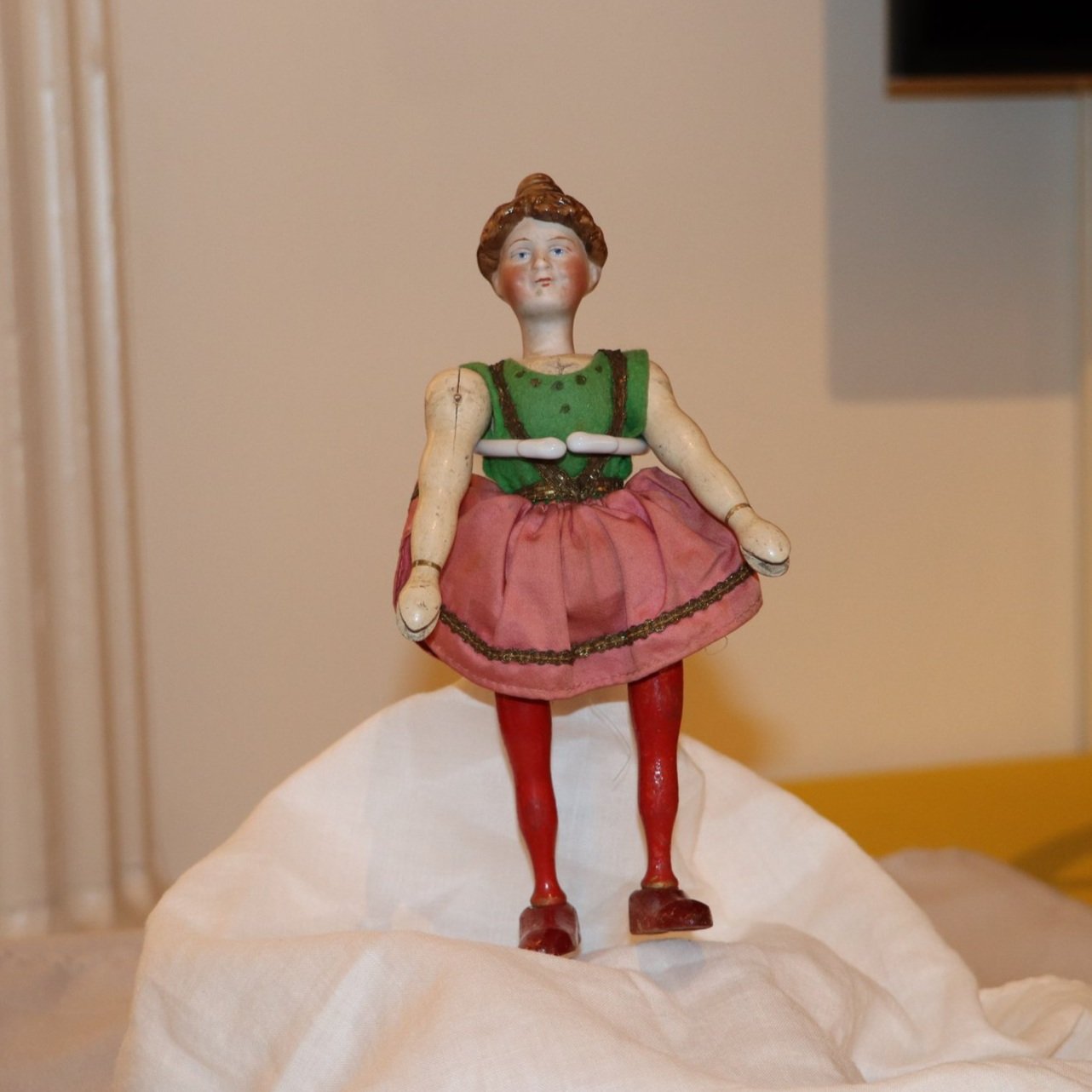
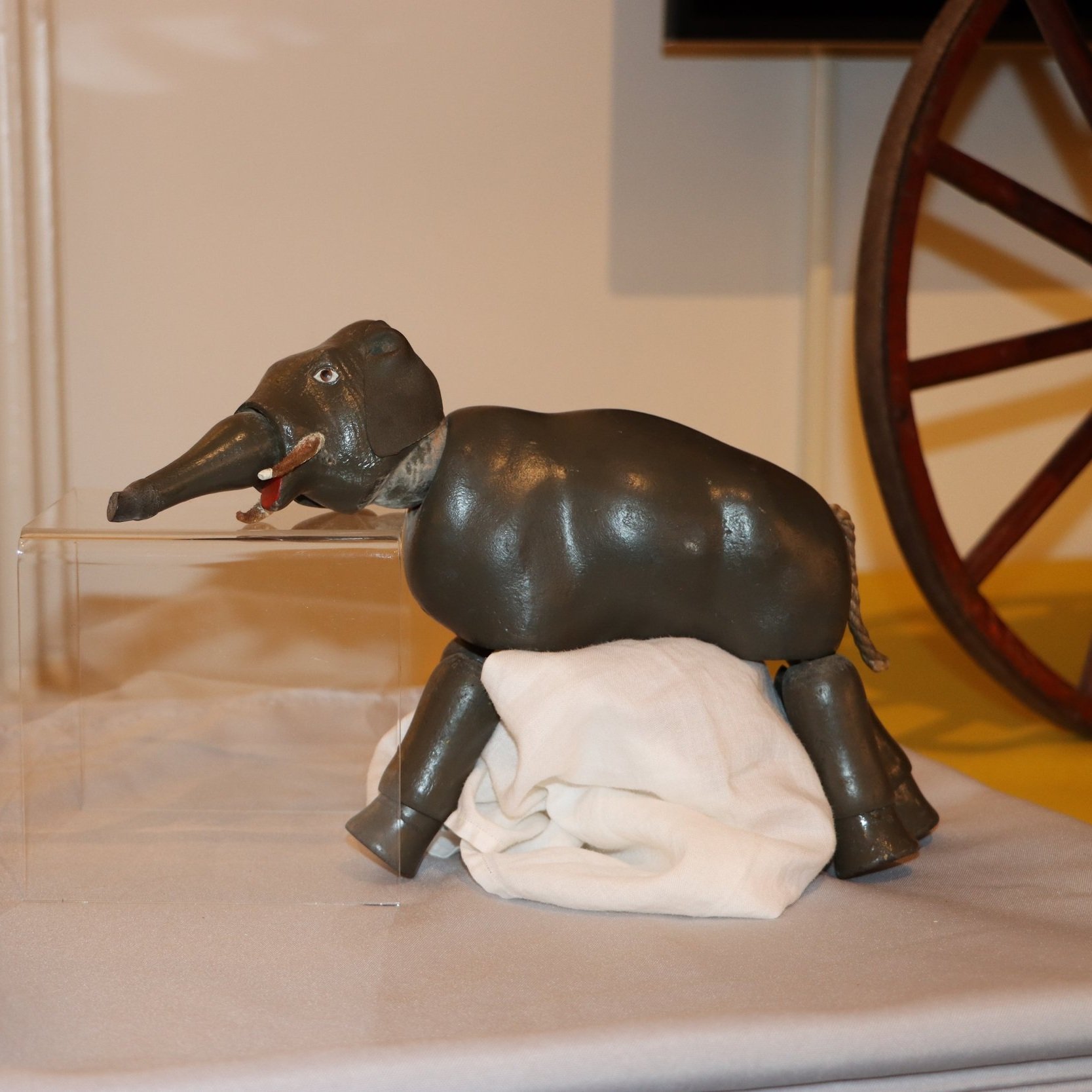
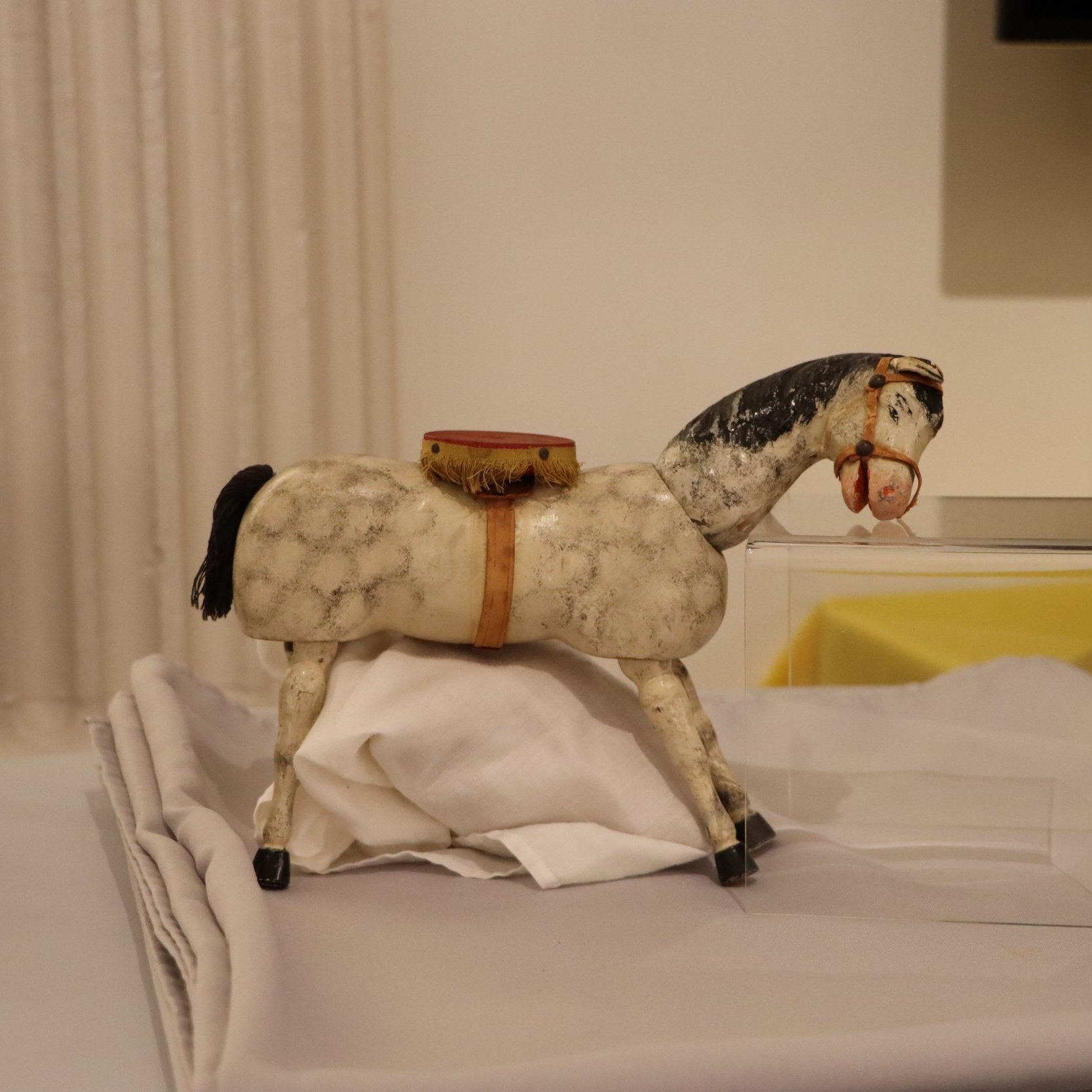
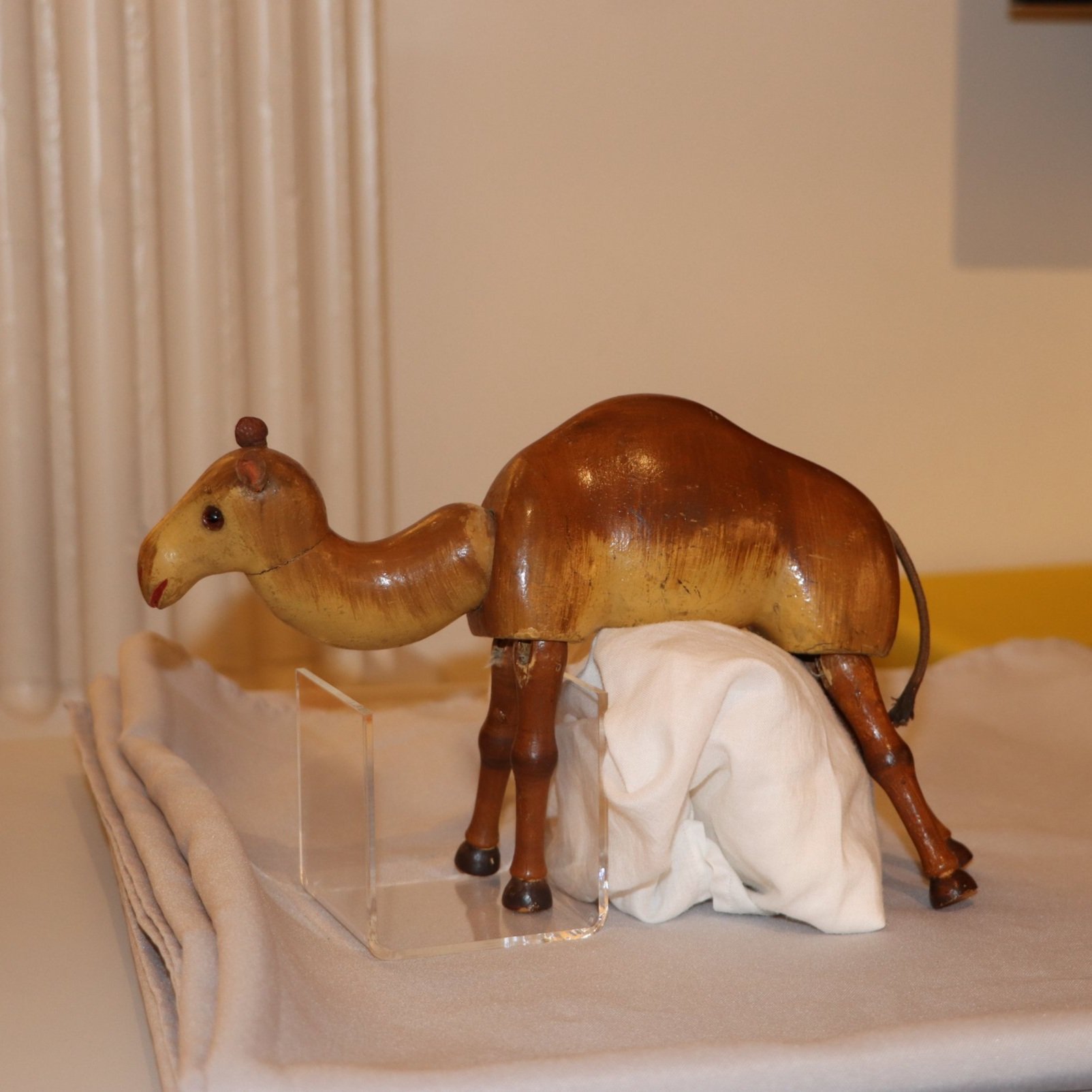
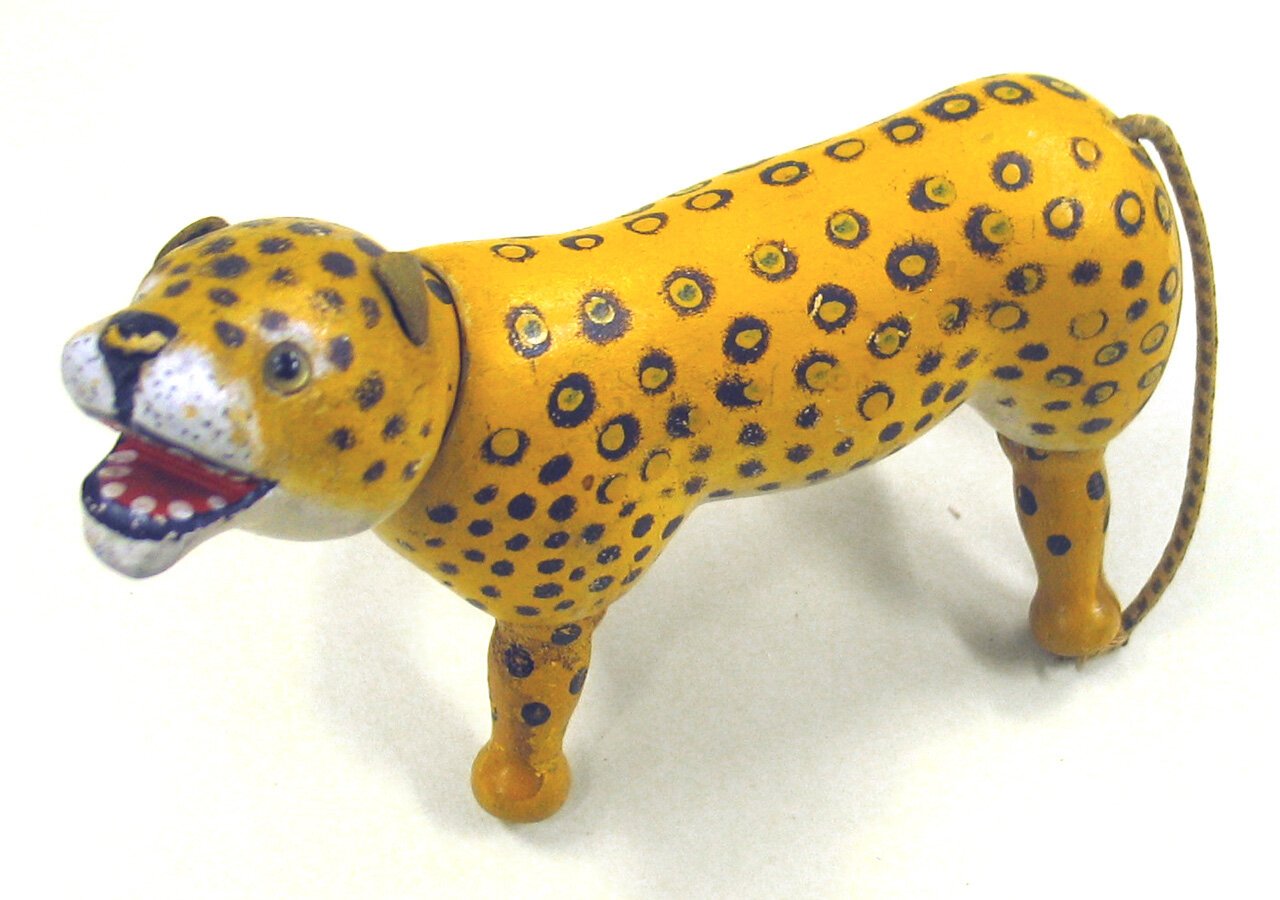
These circus animals and human performers are likely from a set of the hugely popular “Schoenhut’s Humpty Dumpty Circus”. An early advertisement states, “these toys are…educating, as they teach the children patience and perseverance, to think, to create new ideas, to accomplish objects, thus broadening their minds and thereby making other studies easier, all of which is accomplished while the child is innocently at play.” These toys were built with articulated limbs, making them more life-like. They were produced circa 1911.
Gift of Nancy Burch Hunter
2006.3.13 (Ringmaster), 2006.3.14 (Acrobat), 2006.3.2 (Elephant),
2006.3.6 (Horse), 2006.3.5 (Camel), 2006.3.3 (Leopard).
But Most of All, Toys are Fun…
Young Boy in Cowboy Costume
A negative of an undated studio portrait of an unidentified little boy in a cowboy outfit holding a toy pistol. Donated in envelope that read "Braswell."
The negative was taken by James Thomas Smith of Lynchburg's African American community. He worked for the railroad and did photography as a hobby. The donor found the negatives in the basement of Mr. Smith's home, her grandfather, who lived in the area of Federal Street. Ca. 1940s-1960s
Gift of Pamela Smith-Johnson
2014.59.468
Leggett's Department Store and Boys Playing, 1964
A photo of two unidentified little boys playing with toy guns sold by Leggett's Department Store located on Main Street, Lynchburg, VA. Donor’s father-in-law was the window designer for Leggett’s.
Gift of Richard Ayres
2013.43.3
Leggett's Department Store Photo of Girls Playing
An undated photo of two unidentified young girls playing with a toy tea set available at the Leggett's Department store on Main Street in downtown, Lynchburg, VA. This was an ad for the Christmas season.
Gift of Richard Ayres
2013.43.12
